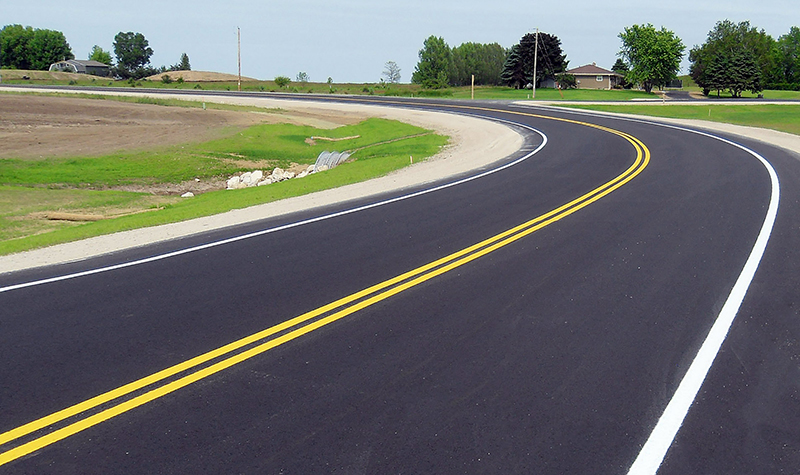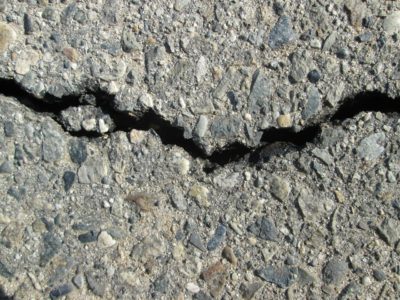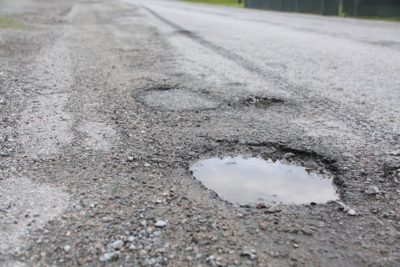How Often Do Roads Need To Be Repaved
 By Matthew Barr, PE
By Matthew Barr, PE
Across the land, one-third of our highways and major streets are in poor condition, according to TRIP, a nonprofit transportation research group.

About the Expert:
Matthew Barr, PE, has been the pattern engineer and projection manager for diverse highway and span projects since he joined Ayres in 1989. He is responsible for project engineering of major roadway and bridge replacement reconstruction projects, including staff management, subconsultant and agency coordination, concept development, applied science design, public involvement, study writing, and plan preparation.
Persistent potholes and recurring ruts wreak havoc with our commutes, impose financial burdens from automobile repairs, inflict pregnant injury, prompt contentious lawsuits, and business relationship for roughly i-third of deaths occurring annually on American roads.
Maneuvering skillfully around the craters, we're left to wonder why certain roads seem more susceptible to impairment than others. We ask, how long can a road ultimately exist expected to concluding? The answer is drawn from several complex variables, showtime among them: initial structure materials. According to the WisDOT Facilities Development Transmission, concrete roads offering an expected service life of roughly 25 years. Asphalt roads are probable to last approximately 18 years. Actual outcomes, nonetheless, depend on more than performance characteristics of concrete vs. asphalt. When estimating road life, we need to consider additional factors.

Temperature Extremes
Areas that experience freeze/thaw cycles are subject area to shortened road life expectancy, peculiarly where drainage is poor. Water seeps into tiny fissures, expands when it freezes below the pavement, and forces the roadway to great and curve, resulting in a bumpier ride. When the water ice thaws, the remaining gaps below the surface leave unsupported, weak pavement susceptible to formation of potholes. Rock salt, which is corrosive to concrete, may as well accelerate these damaging freeze/thaw cycles.
On hot summer days cobblestone and physical both blot oestrus, but these materials aggrandize differently. Concrete is designed to concentrate expansion motion at specific points, while asphalt expands across the unabridged surface. Saw cuts are made into concrete pavement, which is intended to predetermine where this peachy volition occur; fifteen anxiety is a typical distance between joints. As upper and lower road layers react to the rut at varying rates, and in differing means due to composition, surface cracking and buckling results.

Drainage
Poor drainage encourages erosion, causes safety bug, and reduces pavement life. Highways are typically designed with a "crown," or outward slope of a quarter-inch per foot, to bleed rainwater off the route to increase both prophylactic and longevity. Grooves or "tines" cut into concrete and sloped ditches alongside the route also direct water away and prevent damage. For some pavement structures, engineers design pipe underdrain systems to lead water away from the pavement construction and out to drainage ditches.
Substrate Composition
Silty or clayish soil base makes subversive frost heaving more likely. This soil type significantly retains moisture, and in areas that experience freeze/thaw cycles, it tends to shift and expand beneath the roadbed, which results in deterioration and shortened lifespan. Poor substrate may also necessitate thicker pavement, which increases project cost.  On the contrary, sandy, well-drained soil below the road can lend years to its life, potentially justifying the expense of excavating and replacing a clay substrate with more suitable fill up material.
On the contrary, sandy, well-drained soil below the road can lend years to its life, potentially justifying the expense of excavating and replacing a clay substrate with more suitable fill up material.
Wearable and Tear
Traffic-induced fatigue takes a price on both physical and cobblestone, producing ruts and "surface generated" cracks. Heavy trucks, even those loaded within legal weight limits, are very damaging to roads and interstates. According to the U.S. General Accounting Function (GAO), a single 18-wheeler inflicts road impairment equivalent to that caused past 9,600 cars. The GAO besides states that at to the lowest degree 22 per centum of all loaded tractor-trailers exceed stated weight limits, and the percentage is even higher for other types of large trucks. The cumulative damage somewhen results in pavement keen and the need for substantial rehabilitation or potentially total replacement.
Maintenance
Constructive road maintenance addresses impairment earlier rather than later; options can include filling minor cracks, sealcoating, and overlaying before the road requires more extensive work to correct problems. Preventive maintenance may be fourth dimension based, usage based, or performance based – the latter being preferred by many state departments of transportation and the federal regime in contempo years. To balance toll effectiveness with the long-term health of highways, recent accent has been placed on addressing condom issues, preserving existing infrastructure, and implementing alter based on actual road performance. This approach maximizes service life and condom benefits for each dollar.
Case in Signal: STH 17
Two stretches of STH 17 in and around Rhinelander, Wisconsin, require full pavement replacement. Ayres prepared multiple pavement designs for these segments, both of which include urban and rural sections with different traffic volumes and soil conditions. By factoring the above considerations into a smart, toll-constructive solution, the roadways will serve the traveling public for years to come up.
Questions about roadway pattern? Contact any of our transportation leads.
Looking for a Chance to Define Your Career Path?
Our St. Paul part is looking for a bright-minded leader to create and manage a Transportation Engineering/Design group! Take advantage of this unique opportunity to grow a team of professionals while writing your own story within Ayres.
Pave Your Own Path with Ayres
Source: https://www.ayresassociates.com/the-long-and-short-of-it-lifespans-of-paved-roadways/

0 Response to "How Often Do Roads Need To Be Repaved"
Post a Comment